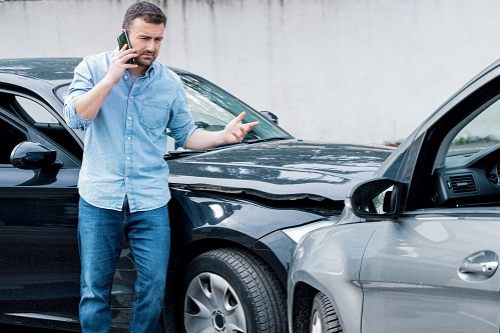- How much is gap insurance in Wisconsin?
- Cheapest gap insurance companies in Wisconsin
- Average gap insurance cost in Wisconsin by city
- How much is gap insurance in Wisconsin by age group?
- How does gap insurance work in Wisconsin?
- Where to buy gap insurance in Wisconsin
- Methodology
- Wisconsin gap insurance: FAQs
- Compare Wisconsin gap insurance rates with other states
How much is gap insurance in Wisconsin?
On average, gap insurance in Wisconsin costs $2,301 a year, but rates vary by company. The cost of your vehicle also affects gap rates. Expensive or luxurious cars tend to depreciate faster than standard vehicles, meaning gap coverage would have to pay more, which increases coverage rates.
Cheapest gap insurance companies in Wisconsin
The cheapest gap insurance in Wisconsin is offered by Travelers, with an average yearly cost of $1,252. Not all car insurance companies provide gap coverage, and rates can vary significantly among carriers.
Take a look at the table below to see the cheapest Wisconsin insurance companies for gap coverage.
| Company | Auto insurance rates with gap premium | Gap premium |
|---|---|---|
| Travelers | $1,252 | $34 |
| Auto Club Group - ACG (AAA) | $1,505 | $82 |
| Erie Insurance | $1,733 | $188 |
| Nationwide | $1,993 | $58 |
| Auto-Owners | $2,221 | $73 |
| Progressive | $2,947 | $32 |
| Farmers | $4,452 | $206 |
Average gap insurance cost in Wisconsin by city
Milwaukee is the most expensive to buy gap insurance with an average rate of $2,601, and Oshkosh is the cheapest with an average of $1,427. Where you live in Wisconsin can affect your insurance rates. Auto insurance rates are higher in cities with more crime and theft since your vehicle is more likely to be damaged or stolen.
This table shows the average gap insurance rates by city for Wisconsin.
| City | Auto insurance rates with gap premium | Gap premium |
|---|---|---|
| Oshkosh | $1,427 | $62 |
| Sheboygan | $1,491 | $66 |
| Sun Prairie | $1,565 | $68 |
| Menomonee Falls | $1,594 | $64 |
| Madison | $1,636 | $70 |
| Wausau | $1,684 | $83 |
| Evansville | $1,741 | $77 |
| Eau Claire | $1,782 | $85 |
| Cudahy | $1,887 | $75 |
| Portage | $1,900 | $88 |
How much is gap insurance in Wisconsin by age group?
Gap insurance rates are higher for younger drivers because they have less experience and are more likely to take risks while driving, increasing the odds of a total loss. As drivers get older, their rates go down. For example, an 18-year-old pays an average of $8,837 per year, while a 25-year-old pays around $2,852 annually.
The table below lists the average gap insurance rates in Wisconsin based on age.
| Age group | Auto insurance rates with gap premium | Gap premium |
|---|---|---|
| Teen | $8,837 | $309 |
| Young adult | $2,852 | $120 |
| Adult | $2,301 | $96 |
| Senior | $1,984 | $81 |
How does gap insurance work in Wisconsin?
When you buy or lease a new car, depreciationDepreciation is the decrease in your car's value over time due to wear and tear, age and mileage. Depreciation is used to determine the actual cash value of a vehicle in the event of a total loss. can quickly cause you to owe more than the car is worth. If your car is totaled, the insurance company will only pay out the car's actual cash value, which may leave you owing on the loan. That's where gap insurance comes in. If your vehicle is totaled or stolen, gap insurance covers the difference between your car's value and the loan payoff.
"Gap is designed for people that take long-term loans and/or roll taxes, service plans, or warranties into their loan," said Zack Pope, agency manager at David Pope Insurance in Missouri. "Most gap coverages only go a certain percent over market value to pay off a loan for a totaled vehicle (typically 25%). It costs significantly less money to get gap through your insurance than to purchase it from the dealership."
For example, let's say you have a $40,000 car loan, but your vehicle's actual cash value is only $35,000. If the car is stolen, your insurance company will reimburse you $35,000, minus your deductibleThe deductible is the amount you pay out of pocket for a covered loss when you file a claim.. Gap insurance would cover the remaining $5,000 that you still owe on your loan. Without gap insurance, you'd be responsible for paying this difference out of pocket.
Once your loan is less than the value of your car, you can drop gap coverage. While you can always cancel gap insurance, you may be unable to add it anytime. Most insurers want you to add the coverage quickly after buying a car.
Additionally, many lenders require gap insurance when getting your loan. Although you can get gap coverage through your lender or car dealership, adding it to your current auto policy is usually cheaper.
Where to buy gap insurance in Wisconsin
Many insurance companies, including major providers, offer gap insurance in Wisconsin. You can add this coverage to your existing car insurance policy or buy a standalone policy.
The best way to get gap coverage is to add it to your auto insurance policy. Car dealers and lenders also offer gap insurance, but their policies are mostly expensive, making them less budget-friendly.
Methodology
Insurance.com commissioned gap insurance rates from Quadrant Data Services in late 2023 at a variety of ages in all 50 states and Washington, D.C. Base rates use a 40-year-old driver with a 2023 Honda Accord LX. Rates were gathered from 138 insurance companies in 1,468 ZIP codes.
Wisconsin gap insurance: FAQs
Is gap insurance required in Wisconsin?
Gap insurance isn't required by law in Wisconsin, but your lender may require you to have the coverage.
Who should buy gap insurance in Wisconsin?
You may need gap insurance if you have a car loan or lease in Wisconsin. Drivers who make a small down payment typically owe more than the vehicle is worth since cars depreciate faster than the loan is paid down, making gap insurance a good idea.
You don't need gap insurance if you own your car or made a large down payment to ensure that you owe less than the car's value at the start of your loan.
What is standalone gap insurance in Wisconsin?
Standalone gap insurance is a separate policy, not a part of your car insurance. You can buy gap insurance from your lender or a private company as an independent policy.
Does gap insurance cover leased cars in Wisconsin?
Wisconsin gap insurance covers leased cars where the driver owes more than the vehicle's current market value. Over time, you may remove gap coverage once your vehicle is worth more than what is owed.
Compare Wisconsin gap insurance rates with other states
 You might also be interested in
You might also be interested in- Wisconsin car insurance laws and requirements: What is changing in 2025
- Wisconsin OWI and insurance: How much does an OWI raise your insurance?
- Speeding ticket calculator in Wisconsin
- SR-22 insurance in Wisconsin
- Non-owner car insurance in Wisconsin: Best and cheapest companies
- Low-income car insurance in Wisconsin: What you need to know
- Wisconsin car insurance guide
- Wisconsin car insurance coverage calculator
- Cheapest car insurance for high-risk drivers in Wisconsin
- Cheapest home and auto insurance bundle in Wisconsin






